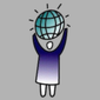The upload guidelines need revise, we need somebody to manage the operation, and we need people to upload scans. Any interest? Any suggestions? Any volunteers?
Anonymous
User login
Please support the defense of Ukraine.
Direct or via Unclutter App
Active forum topics
Recent content
Navigation
No Ads.
No Trackers.
No Social Media.
All Content Locally Hosted.
Built on Free Software.
We have complied with zero government requests for information.


I'm not the one to manage anything (the rest of my life seems to keep my plate full), but I do have a fairly good scanner that'll do 600dpi max (just go out to lunch first, it's difanatly not a speed deamon), and photoshop elements, which I can correct scans with...
Computer wise, I can give you scans of these boards (in order from oldest to newist):
PowerBook 170
LC III
Power mac 7500
#100MHZ card
#120MHZ card
#180MHZ card (I think I still have it around, or was that the one I sent down under?)
#G3 card (I don't know the brand, I can pull it out if nessary
Bege g3 (can't remember the speed)
Bondi iMac (rev 3)
I'm interested in helping in any way i can. and as soon as i get a new scanner, (mine are too old to work on here, i'd have to put up with suckworthy microtek driver/software combination that only works with OS 8.) I'll let you know when I get a new scanner, and i'll scan boards that I have. About management, how extensive of an operation is it? This would help me, and anyone else with interest, get a better idea of what exactly they would be doing, and to be able to judge time consumption.
72 dpi (or ppi, pixels per inch) used to be standard screen-veiwing resolution. In these days of more VRAM and smaller screens probably half (?) the people viewing this will be using at least 96 ppi. With my 20" CRT set for 1152x870 I'm about halfway between the two.
700/72 = about 9-3/4"
I don't have one handy to measure, but I'm guessing they're a little over 3" tall... so about 3X magnification?
That would give an actual resolution of about 216 dpi... minimum for photos (or ink-jet printing) is 300 dpi.
Maybe the 72 dpi spec was necessary for some old browser or program, but I don't think it's so anymore. Why not specify whatever the final actual resolution is to be, to avoid confusion.
This isn't even an option in GraphicConverter anymore. The choices are 16-bit ("thousands of colors") or 32-bit (millions). The standard for "progressive" JPEG (allows you to see it as it loads) is 32-bit color or 256 grays only.
Some ICs are faded or never had ink on 'em. The only way to see the numbers is to view at an angle so the light reflects from the sides. It'd be nice if there were some way of bringing these out...
My scanner is black inside the lid... I guess I could try putting a sheet of paper on top.
This is about optimal for quality and still saves substantial file size. You will develop artifacts if it's opened (worked on) and saved repeatedly without going back to 100%.
The other thing is to save it "web ready"... no resource fork or extraneous information, such as icons and previews.
Dan